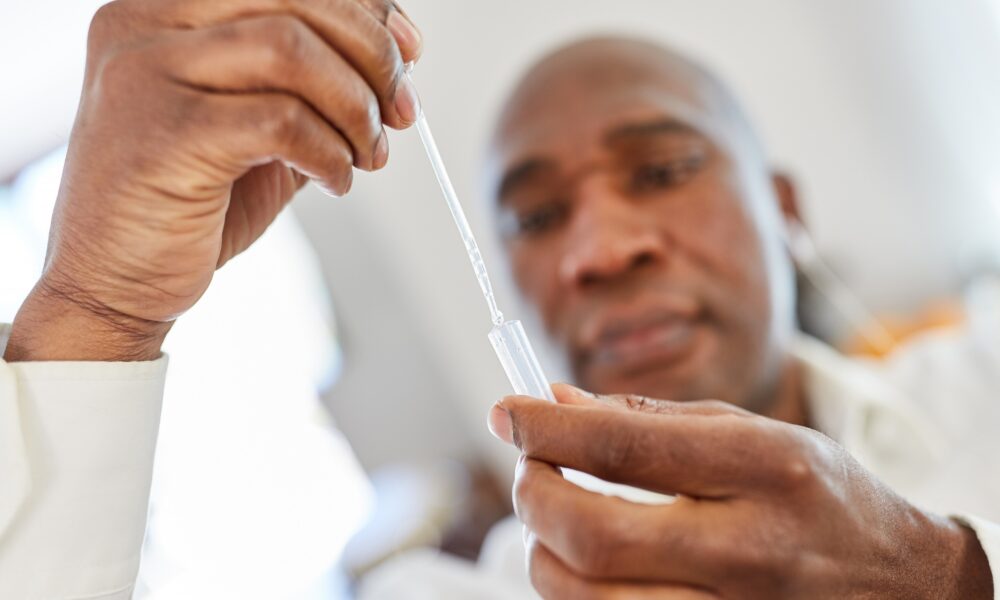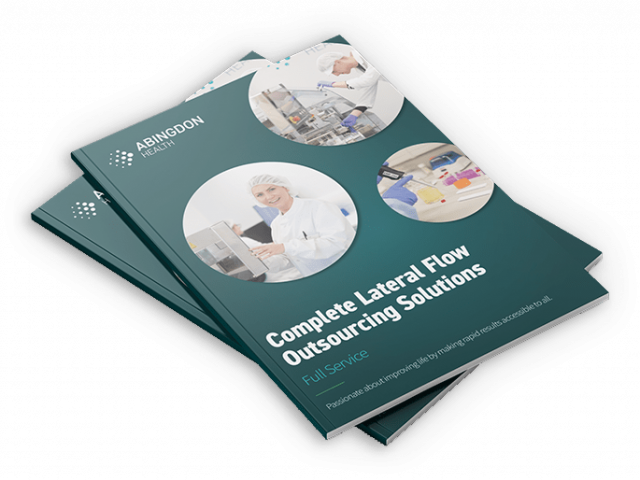Using Saliva-Based Lateral Flow Tests; It’s A Complex Business

Lateral Flow Market 2.0 Series: Part 2
In the first of a series of blogs on innovations in self-testing driving us towards Lateral Flow Market 2.0, our CEO, Chris Yates highlighted the use of saliva as one of a number of lateral flow technology innovations that we expect to drive growth in the market.
What is Saliva?
Factors When Measuring Analytes In Saliva
How Does Oral Fluid Testing Benefit The End User?
Key Take-Away
Swab testing became synonymous with COVID-19 testing and typically used samples from the back of the throat or inside the nasal passage. Similar swabs can also be used to collect less invasively from the mouth cavity where saliva is used as the sample. The team at Abingdon has worked on developing saliva-based lateral flow tests for decades, all the way back to the development of saliva tests used at the roadside back in the noughties to detect the presence of narcotics, and as a leading lateral flow CDMO Abingdon can bring this experience to bear on your project.
In essence, the combination of saliva sampling with lateral flow testing for a specific analyte offers a very powerful approach. In this instalment, Abingdon’s R&D team provides insight into this innovative area. We look at saliva as a sample and why expertise and experience are paramount for the successful on-going manufacture of saliva-based lateral flow tests.
What is Saliva?
Saliva is the common name for the fluid found in the mouth cavity. It is typically composed of secretions from specific glands within the mouth, bacteria, food debris and cells. Scientists tend to refer to this as oral fluid to distinguish it from saliva produced by the salivary glands. Oral fluid contains a small percentage (<1%) of mucoprotein which is responsible for the viscosity.
Factors When Measuring Analytes In Saliva
Many analytes can be measured in oral fluid, including antibodies, viral antigen markers, through to steroid hormones and drugs. A healthy person produces approximately 600 millilitres of saliva every day; although this is influenced by many external factors.
Production or flow rate of oral fluid varies considerably from person to person and to normalise this, a fixed volume is needed. This can be conveniently collected on a suitable device with a sample adequacy indicator or drooled into a calibrated cup.
In addition, individuals’ oral fluid can be markedly different from each other in its viscosity. For lateral flow tests, it is important that each sample flows at the same rate and to ensure this we use a cocktail of detergents within a buffer. A bonus is that for some analytes, this soapy environment can also act as an extraction step; overcoming any analyte-protein binding or extracting viral nucleic acid as examples. Alternatively, the detergent cocktail can be incorporated into the device itself, should a dilution step or extraction not be required.
Considering all these variables and understanding how a target analyte interacts with saliva or membranes within the tests, for example, is vital for achieving successful routine manufacture.
How Does Oral Fluid Testing Benefit The End User?
The COVID-19 pandemic has taught us many things, but in terms of diagnostics – particularly lateral flow – the wider public now knows rapid, flexible, and easy diagnosis is possible. This demand will grow, and health practitioners will want to appease these demands with tools that speed up and ease their processes.
Collecting oral fluid is straightforward and non-invasive; and coupled to easy-to-use lateral flow technology it is so advantageous… Very compelling in a range of testing scenarios.
Roadside Drugs of Abuse (DOA) testing was one of the earliest adopters of this technology with the fast sampling and rapid results ruling out the innocent or enabling immediate law enforcement procedures following a positive result.
During COVID-19 we saw the emergence of oral fluid antigen testing from companies such as Vatic Health. These tests tend to be preferred from users as they don’t require the uncomfottable nasal pharanygeal swabbing or the “tonsil tickling” swabs at the back of the throat.
We are also seeing saliva-testing applied to a range of other applications. Within infectious disease, for example, oral fluid has been used in HIV testing for a number of years, with products such as the OraQuick HIV self-test, available in the UK through Abingdon Simply Test. Outside of infectious disease we are seeing the use of saliva in areas such as fertility testing. Salignostics is launching the first ever saliva-based pregnancy test; a huge step forward from the traditional urine-based tests, offering a much more convenient and hygienic testing solution.
Key Takeaway
As noted by an advocate in a webinar about the future of lateral flow, “fewer steps in diagnosis are needed” to meet markets needs and address constraints on healthcare systems. In addition, there is a need to use straightforward and less invasive sampling methods. Saliva-based assays can of course help here.
The development and manufacture of saliva-based lateral flow assays requires knowledge and expertise. For example, overcoming variations in viscosity and contaminants to detect the target analyte takes a high level of competence and know-how. Abingdon has built up significant experience in developing and manufacturing saliva-based assays for human and animal health. Contact our team if you need assistance with completing R&D or scaling-up into routine manufacture.

